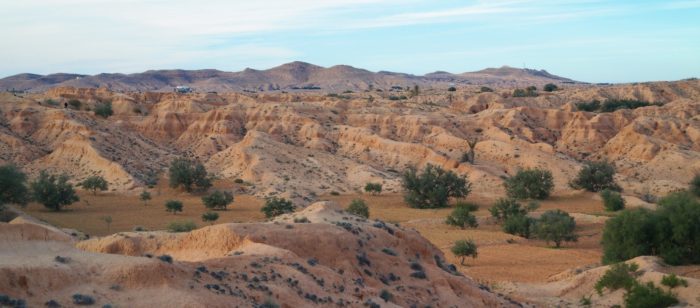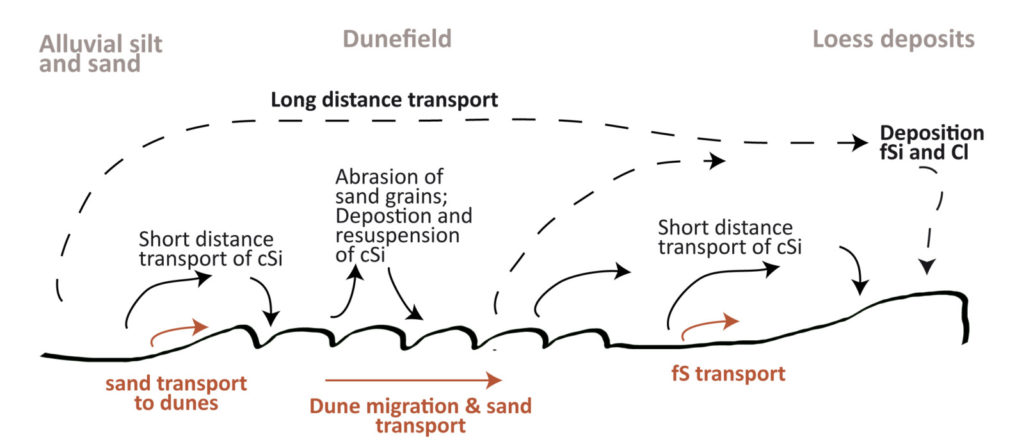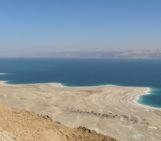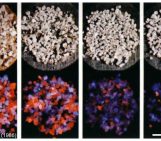
Loess is an aeolian (wind-driven) silty sediment covering over 10% of the Earth’s land surface; it occurs predominantly in the mid-latitudes. On a global scale, loess is among the most widespread unconsolidated sediments, and of crucial importance for agricultural regions where loess deposits are known to form fertile soils because of its ability to store water and retain nutrients. Loess is comprised predominantly of quartz particles in the coarse silt (diameter 20–63 μm) fraction, but some deposits known as desert loess also contain fine sands (diameter ~80 μm). Loess is formed from high accumulation of windblown dust that is trapped, deposited and preserved on certain landscapes. After deposition, dust will be altered by weathering and soil-forming processes, and is held in place by vegetation. Moreover, loess is recognized as an archive of past climate change and especially of atmospheric circulation. Typically, when considering loess, one thinks of its glacial origin in the mid-latitudes (often ~50°), where loess is formed through a suite of processes starting from glacial grinding, transport by rivers and wind, and finally deposition in regions close to ice shields and rivers. However, loess deposits can also form in lower latitudes in proximity to deserts. These are called “warm” loess or desert loess.
Desert loess as a geo-archive and its global distribution
Terrestrial silty sediments of a narrow grain size range occur in low- and mid-latitude unglaciated dry arid and semiarid areas; examples include Central Asia, the Chinese Loess Plateau (CLP), subtropical Africa, Arabia, and Argentina. Suitable conditions for the presence, entrainment, transport and subsequent deposition of silts are vital for the formation of loess deposits in general. Desert loess shares many similarities with glacial loess; however, there are also clear differences. While glacial grinding and dry sea shelves or river beds are considered the main source of silts for “cold” loess; the proximity to deserts plays a crucial role for desert loess formation. In (semi)arid regions silt is usually provided by deserts, and loess deposits exist in their vicinity where deposition and stabilization can take place. These conditions are controlled by a variety of factors, including climate, tectonic activity and orogenesis, vegetation cover and topography.
Desert loess as a result of dust emission and abrasion within dune areas
Where does the silt in desert loess come from? Figure 1 shows a conceptual model of production, transport and deposition of desert loess. During sand transport in dunes systems, sand grains get smaller due to a process called abrasion. Particle size reduction of sand-sized grains by abrasion has been widely advocated as a mechanism to produce coarse silt particles in deserts. Field experiments confirm that this form of abrasion can produce coarse silts from dune sands. Bigger, heavier particles are transported by wind over shorter distances, while finer, lighter particles are transported over longer distances. Assuming a supply of (coarse) silt and sufficient wind strength for transportation, deposition will occur where the particle-settling velocity exceeds the upward turbulent motions, or where precipitation washes the silt out of the atmosphere. Loess deposits are formed downwind of dune systems, where finer particles (silts, coarse silts and clays) are deposited. These are desert margin areas with elevated precipitation and a denser vegetation cover compared with the dust source areas (e.g., Sahel, Argentina, Chinese Loess Plateau, Negev) or in areas of complex topography (e.g., Tunisia).

Figure 1: Conceptual model of production, transport and deposition of desert loess (redrawn based on Lancester et al., 2020); fSi = fine silt; cSi = coarse silt; Cl = clay.
Sedimentary and geomorphic evidence for desert loess provenance
A higher wind energy and more frequent dust storms are often related to late Pleistocene cold periods. Both dune activity and loess deposition occurred in periods of dry, windy, and dusty conditions. Given the size range of coarse silt (20–63 μm) and the fact that desert loess sometimes has a variable fine sand component, it is to be expected that this grain size range would be transported in short-term suspension for distances of up to several hundred kilometres during dust events. For example, Tunisian desert loess is derived from areas within 20-50 km of the deposit location. Possible sources of coarse material for desert loess include sand seas, ephemeral river valleys, dry lake basins, and alluvial fans.
Conclusion
Loess deposits are the result of a highly complex suite of environmental, lithological, tectonic, geomorphic, and topographic influences, which apparently are forming loess in both mid-latitudes and along desert margins. Deserts, dry river and lake basins, and alluvial fans are important source areas for the silts and fine sands that form desert loess. Therefore, these loess deposits are often found at desert margins. Similar to glacial loess, desert loess may be used to infer important information about past climate dynamics and changing wind fields. This highlights the importance to study desert loess deposits and increase our understanding of their sources, transport pathways, and depositional environments.
Selected References: Crouvi, O., Amit, R., Enzel, Y., Gillespie, A., 2010. Active sand seas and the formation of desert loess. Quaternary Science Reviews 29, 2087-2098. Lancaster, N., 2020. On the formation of desert loess. Quaternary Research. doi:10.1017/qua.2020.33 Wright, J.S., 2001. “Desert” loess versus “glacial” loess: quartz silt formation, source areas and sediment pathways in the formation of loess deposits. Geomorphology 36, 231–256.
This is a co-blog of the EGU divisions of ‘Climate’ and ‘Stratigraphy, Sedimentology and Palaeontology’
and was edited by both editorial boards.



